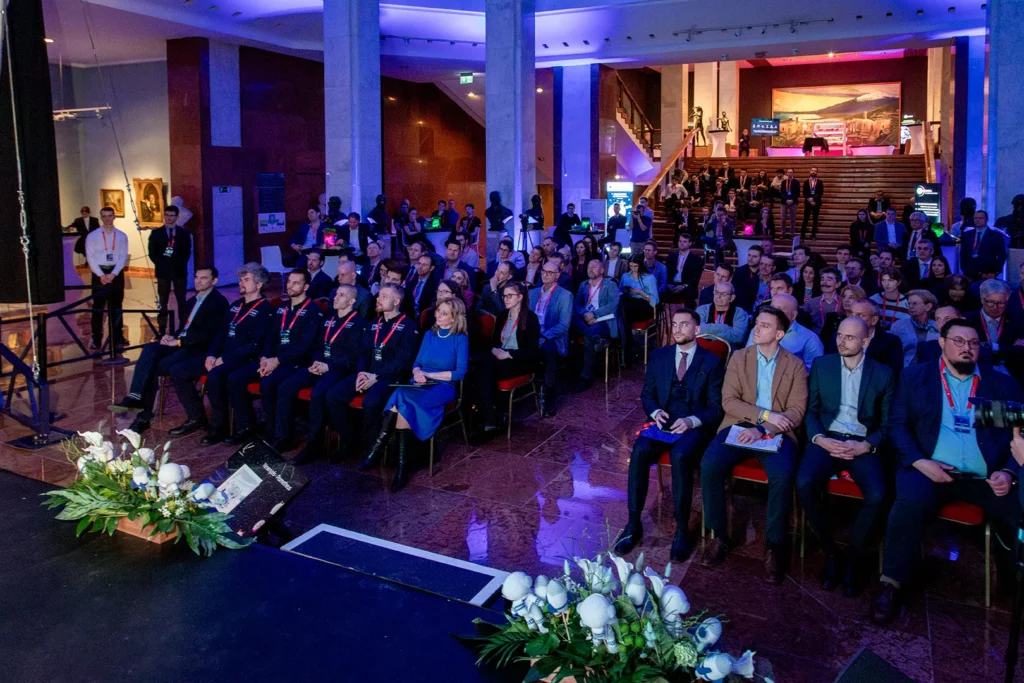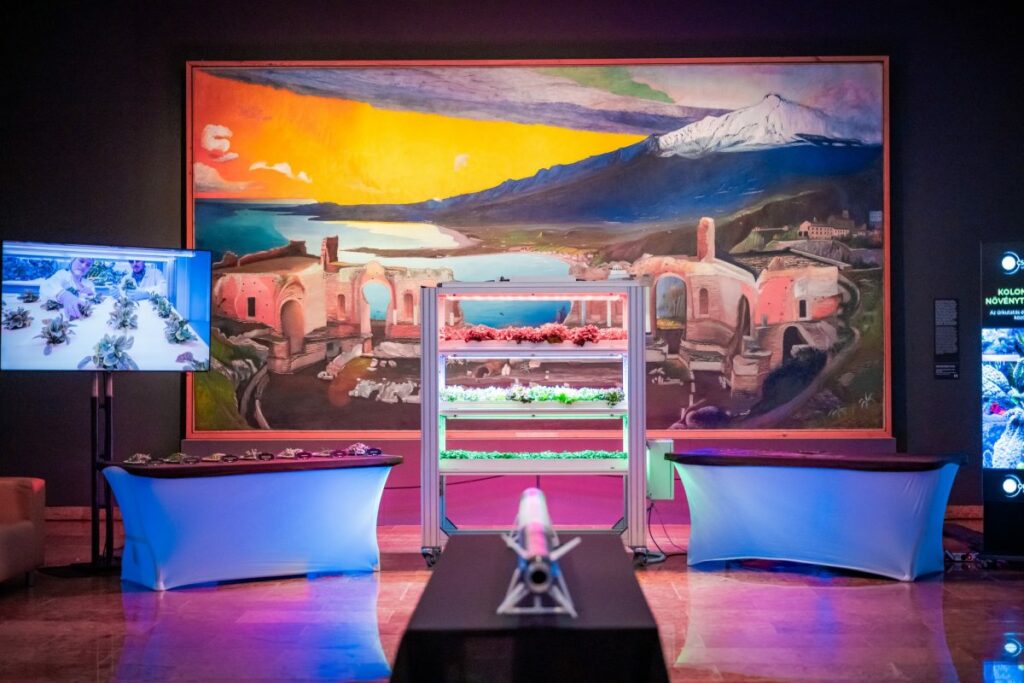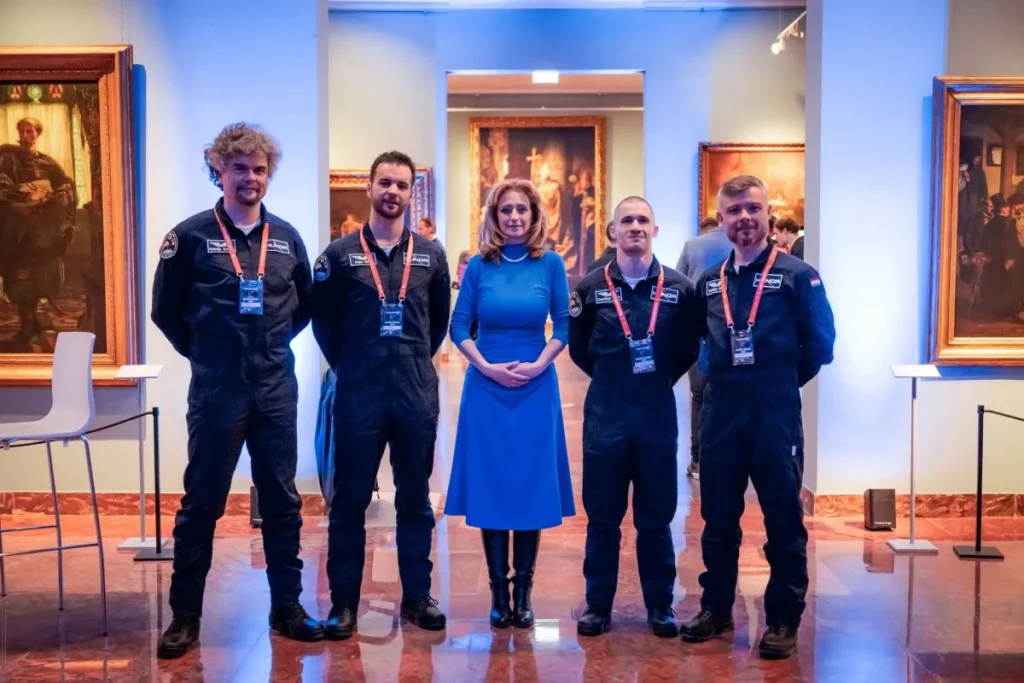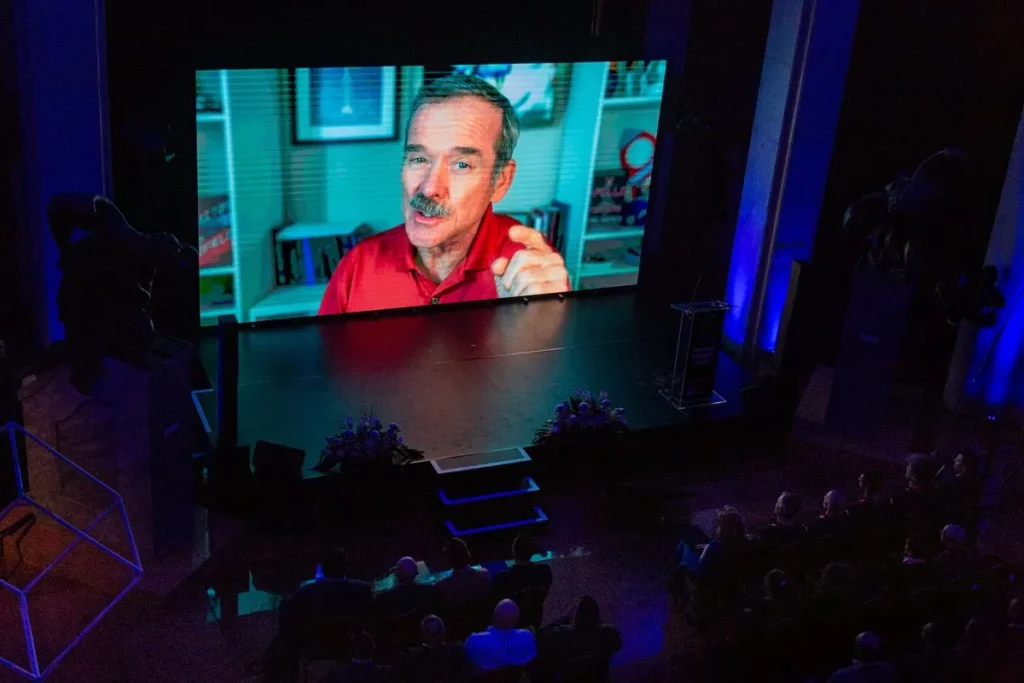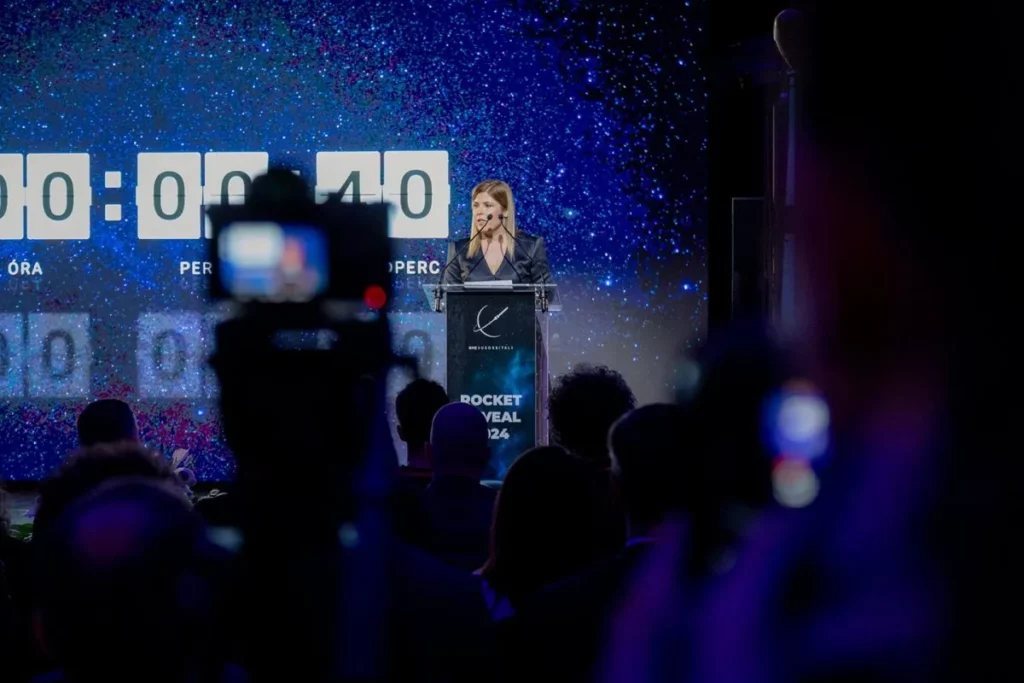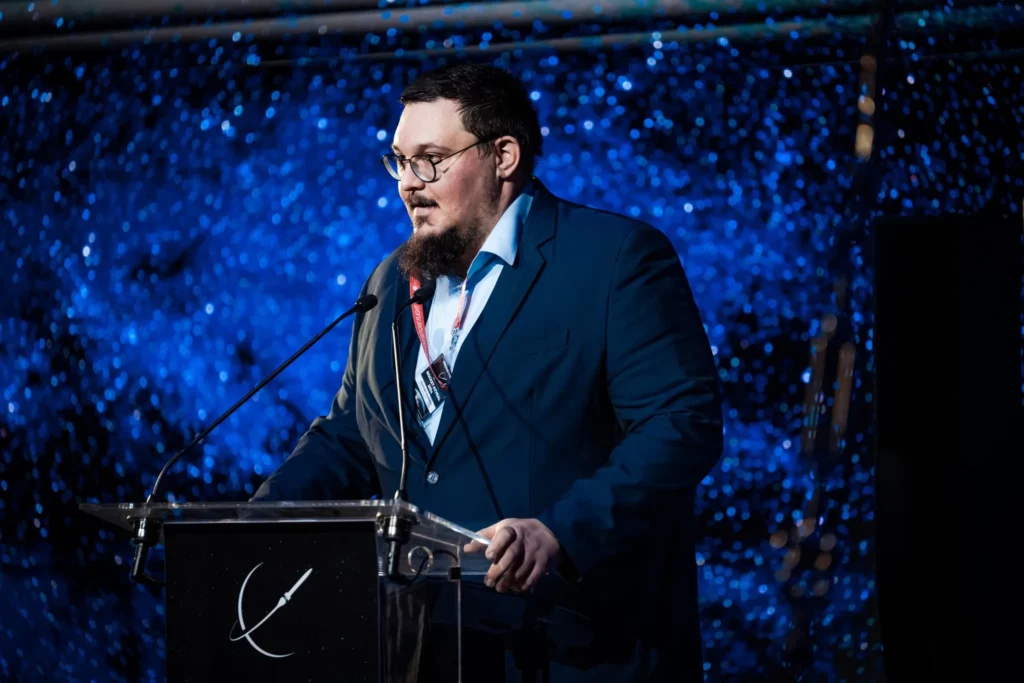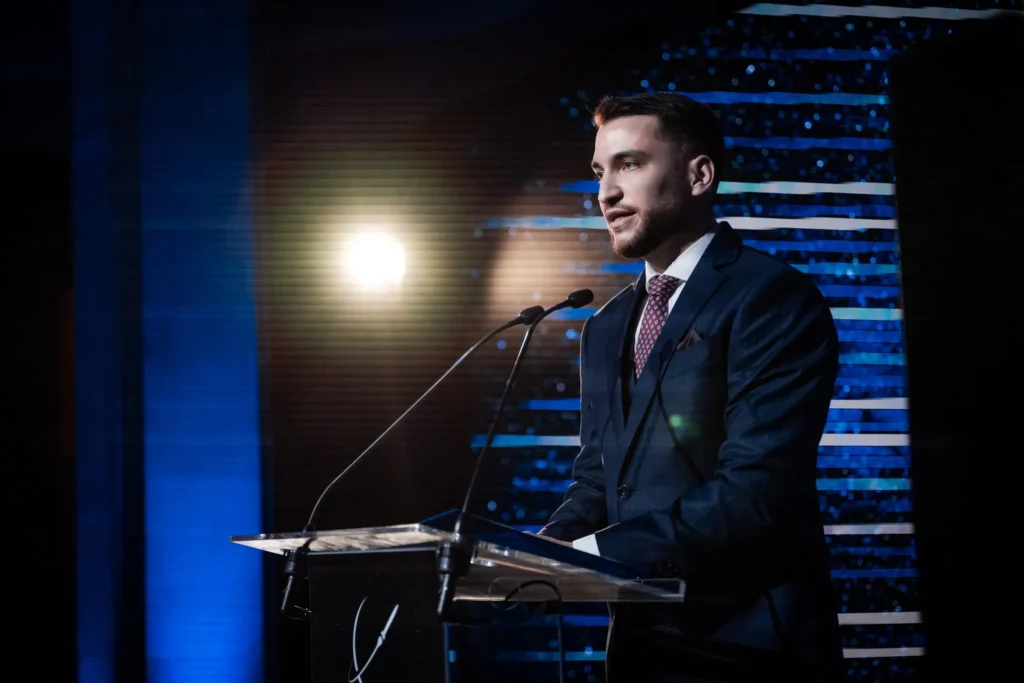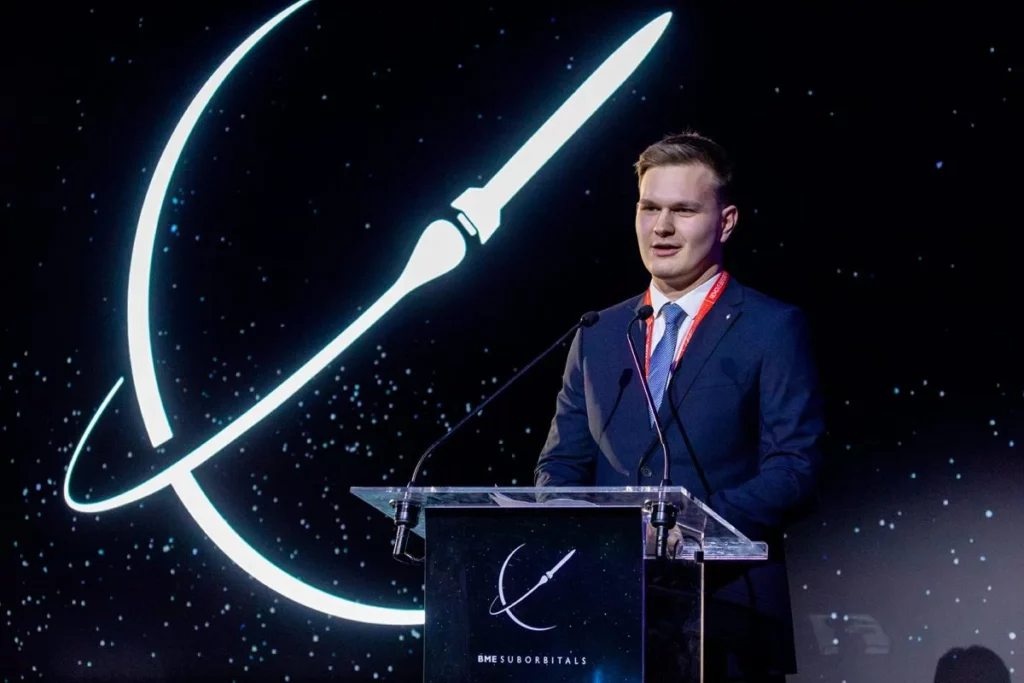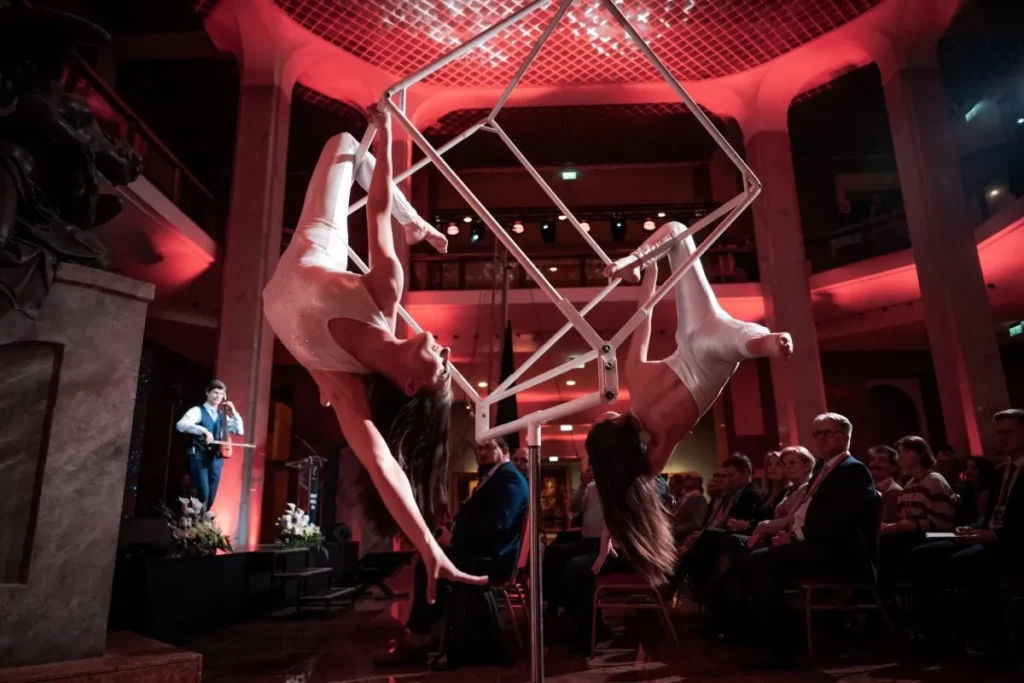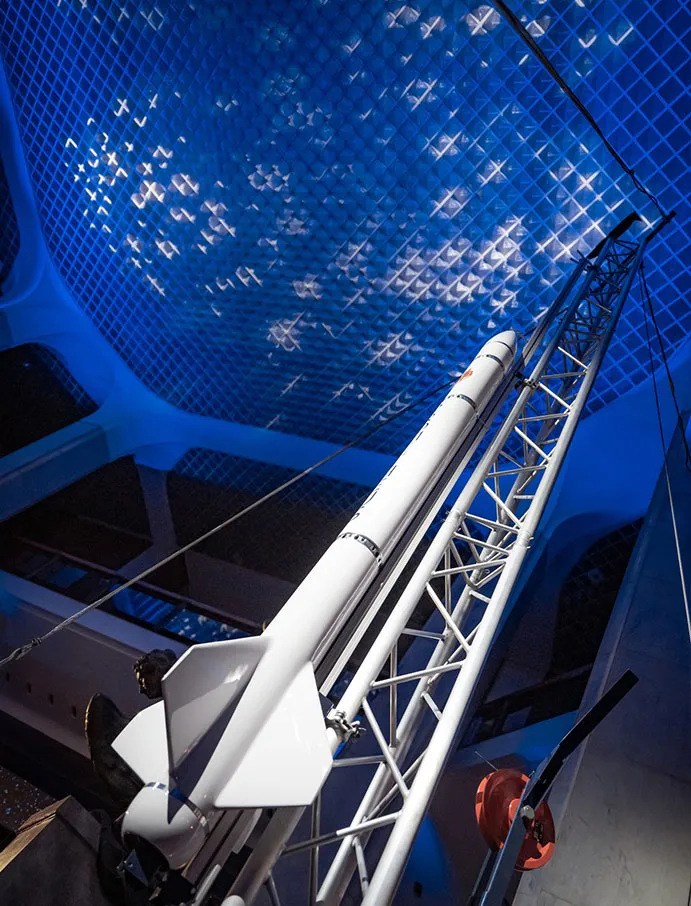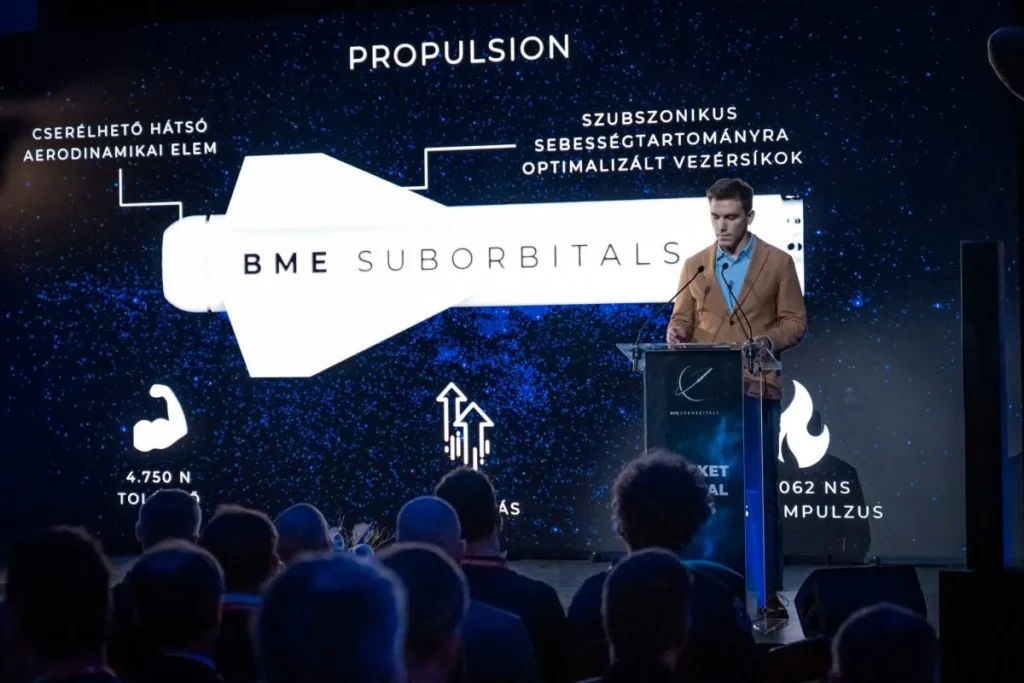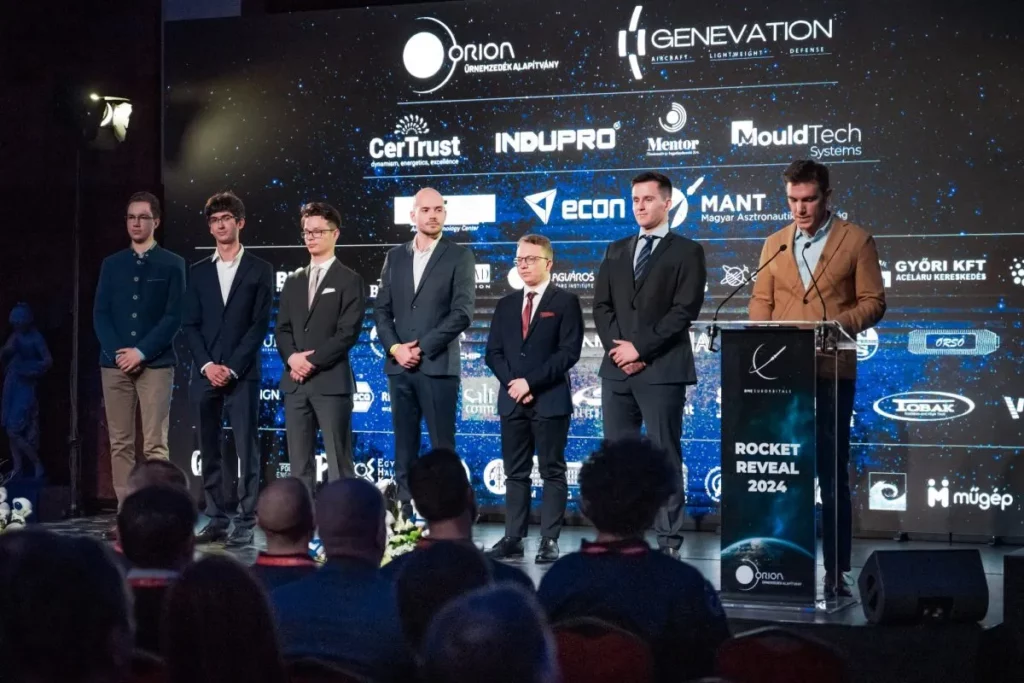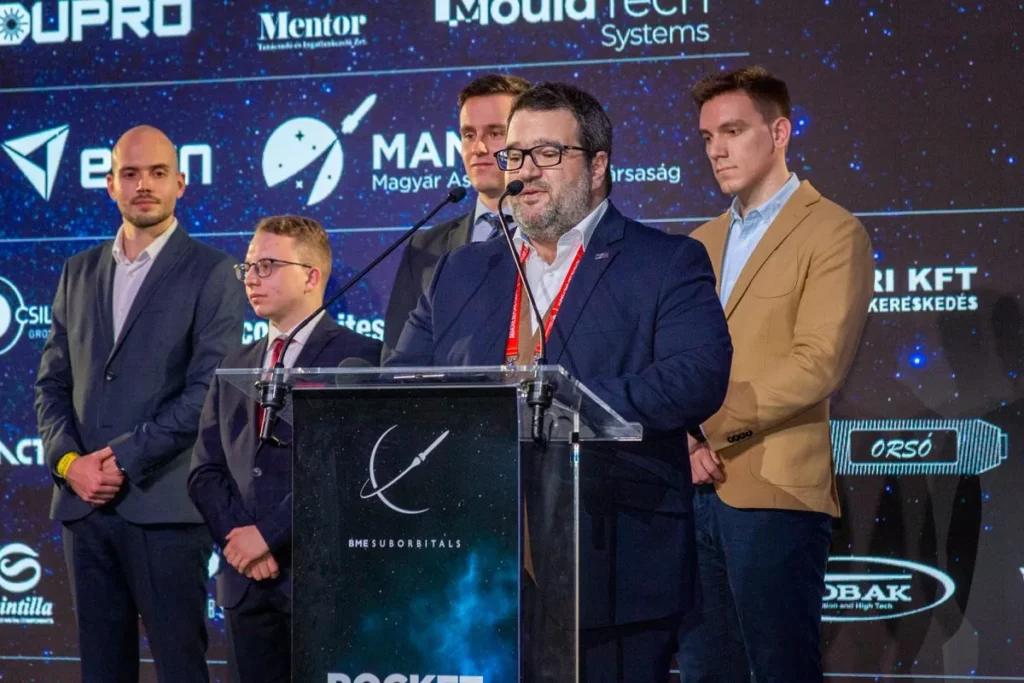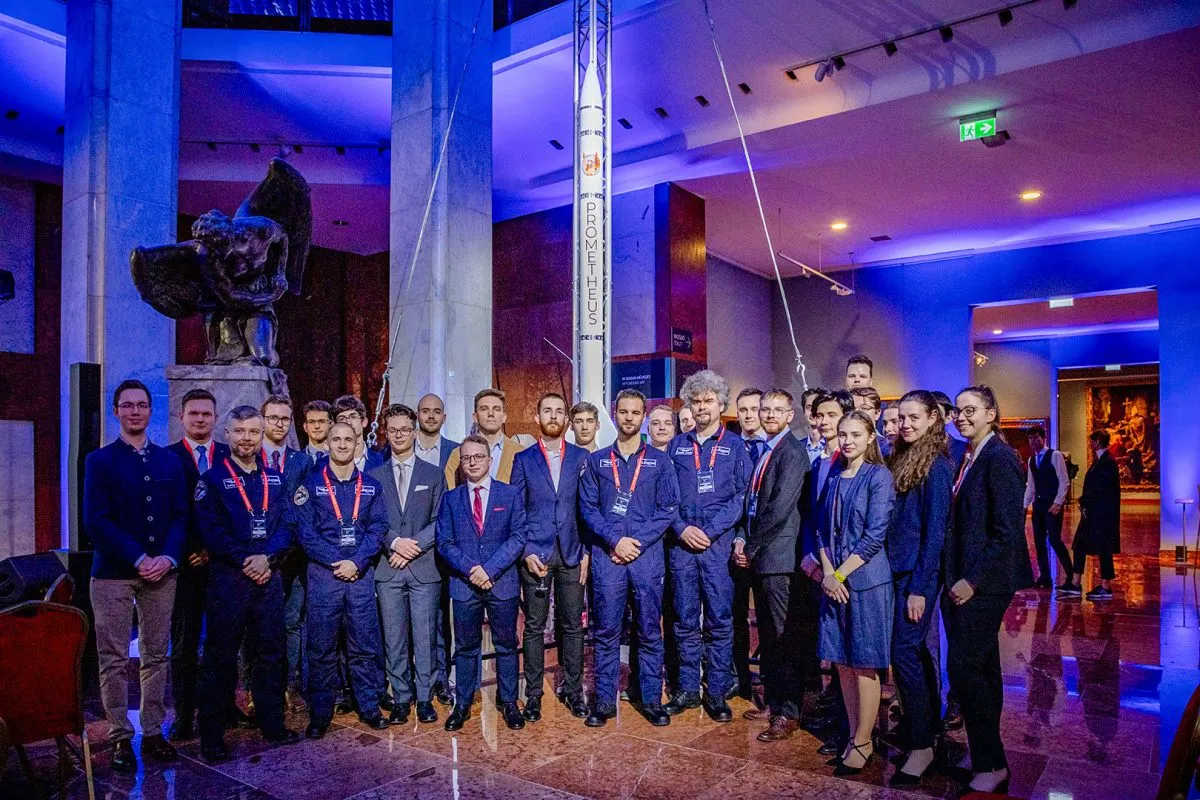BME Suborbitals Rocket Reveal
The event was organized by Orion Space Generation Foundation. Our foundation was established with the goal and mission of popularizing space exploration and space science to increase knowledge and interest in the sciences, as well as to support research and innovation activities. At the Csillagváros Kft. R&D vertical farm of the Foundation, colonization plant research is underway, and in the field of education, the Giant Moon and Mars Map project for Hungarian children will soon be launched in collaboration with the American Aldrin Family Foundation. We have been working with the BME Suborbitals team for almost 2 years within the framework of our talent development program, and one of the very serious results of our cooperation was the event on Monday.
More than a hundred guests attended the event, including prominent figures from the domestic space industry. Dr. Orsolya Ferencz, the ministerial commissioner responsible for space research, who was also the patron of the event, as well as the candidates of the HUNOR program, and as a virtual surprise guest, Canadian astronaut Chris Hadfield greeted the university rocket developers in a pre-recorded video! Anett Fenyőfalvi, the president of Orion Space Generation Foundation, stopped the countdown before the symbolic launch to share the history of the foundation’s relationship with BME Suborbitals with the attendees. The final countdown from ten seconds was from the original audio recording of the Apollo-11 mission, further piquing interest.
Before the unveiling of the rocket, speeches and presentations were given: after the opening speech by Dr. Orsolya Ferencz, Szabolcs Szolnoki, the deputy state secretary responsible for technology at the Ministry of Economic Development, and István Sárhegyi, the cabinet chief of the president of 4iG Nyrt., an industrial consultant, gave speeches.



